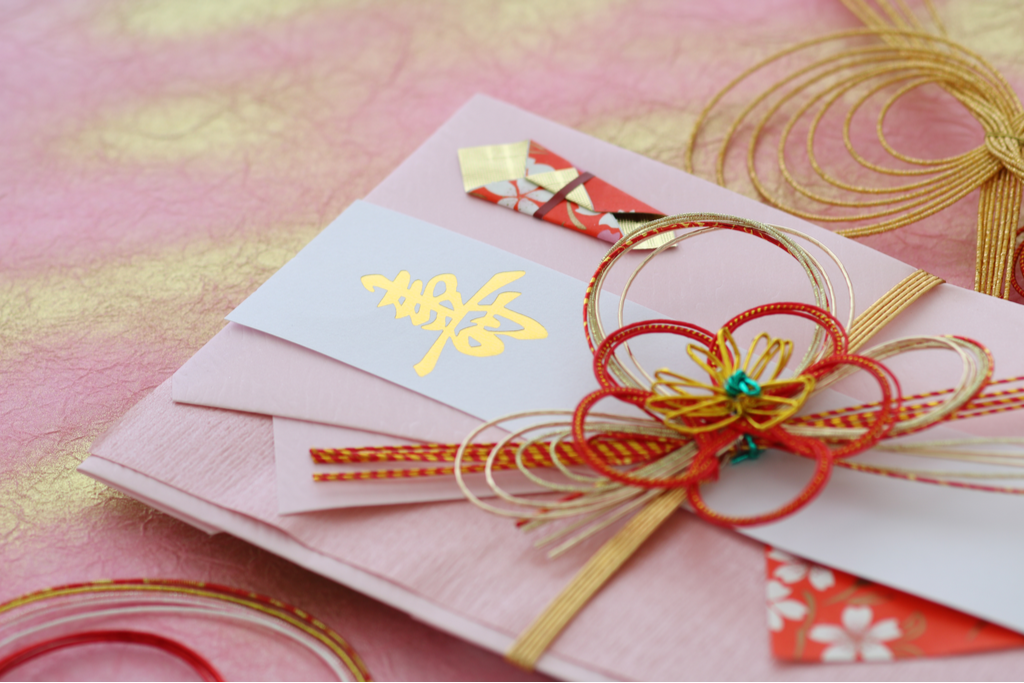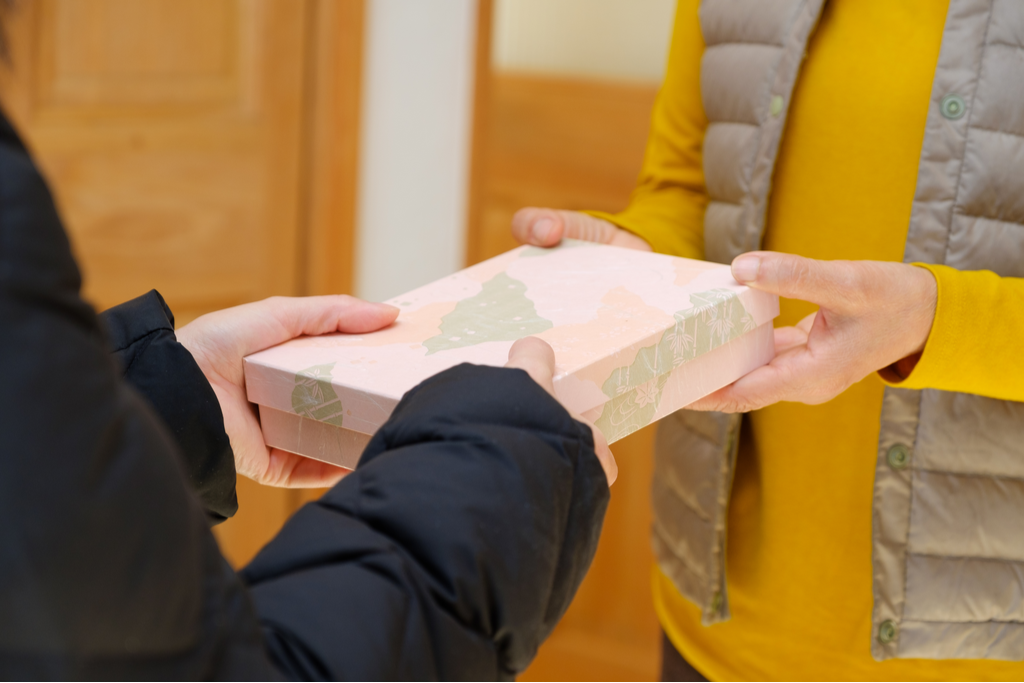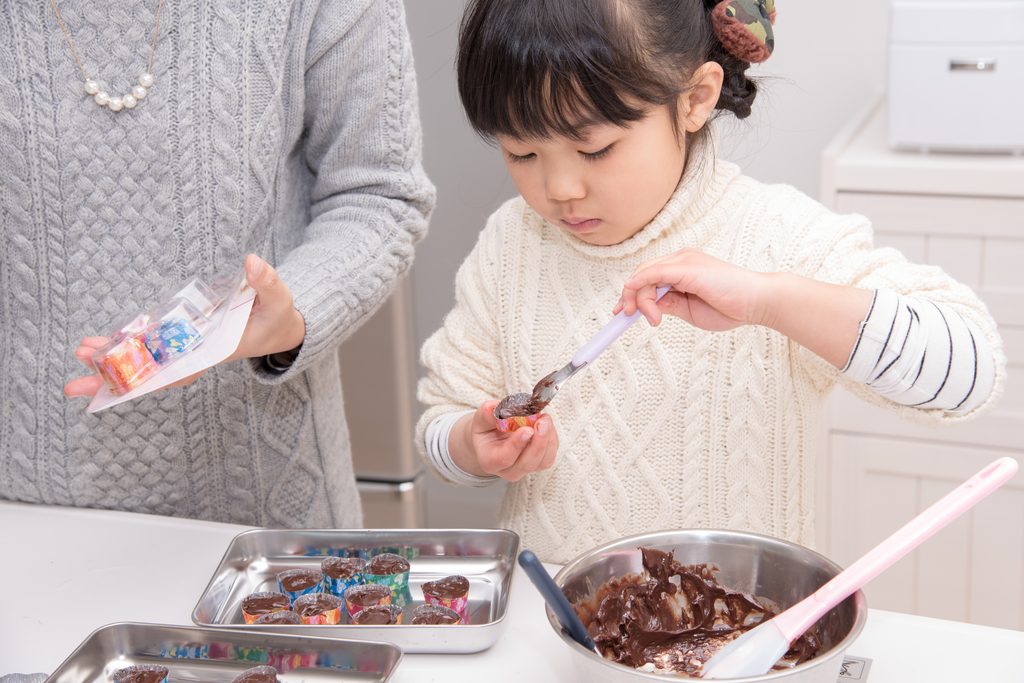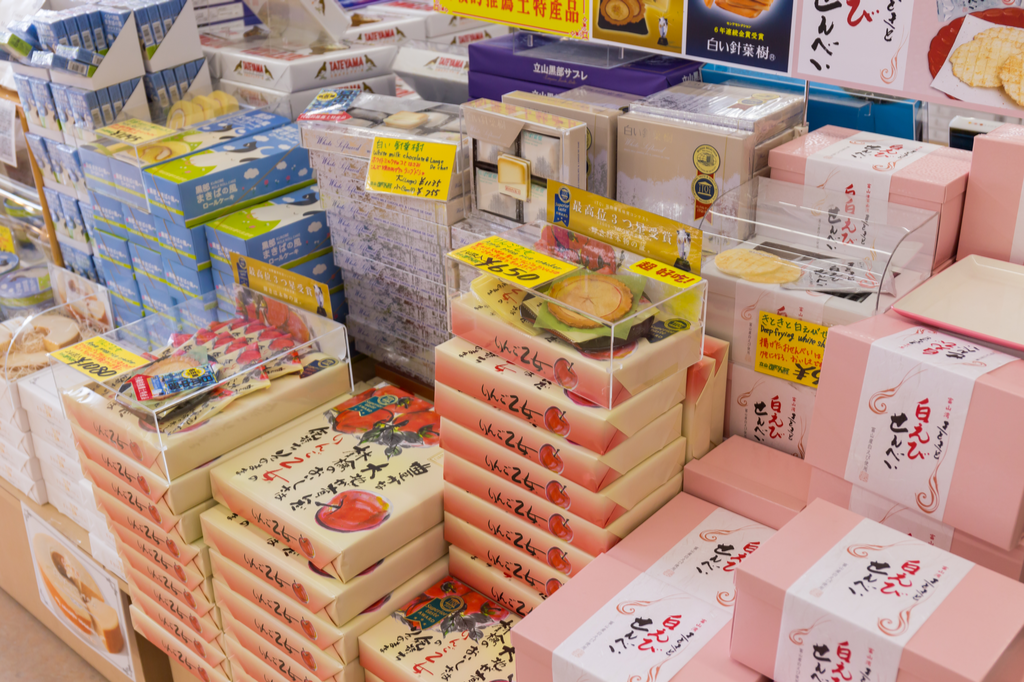culture
The Art of Gift Giving in Japan: How To!
Kim Kahan
Posted on March 24, 2022
Share:

Gift giving in Japan (and gift receiving) is a true art, entrenched with many customs and unspoken etiquette. There is much to learn, whether it’s the different types of gifts, the varying times of year for gift giving, or even how many hands to use to accept a gift.
Let’s have a closer look at the ritual of gift-giving in Japan.
The Art of Gift Giving: Special Occasions
Believe it or not, there are two specific periods in Japan when it is customary to give a gift, in addition to more obvious occasions such as birthdays and celebrations. They are called ‘Ochugen‘ and ‘Oseibo.’
Ochugen
Ochugen is celebrated on July 15th, a mixture of an old festival from Taoism (lunar calendar) and the Buddhist festival is known as ‘Obon’ in Japanese. During Ochugen, people give presents to express appreciation for figures in their life, from children to teachers and family members.
The type of gift depends on the receiver, such as flowers, chocolates, and even alcohol as a gift. Many like to give gifts from their hometowns, like Japanese peaches from Okayama or locally produced matcha (Japanese green tea).
During Ochugen gift-giving season, gifts are presented in wrapping using white and red ribbons, a sign of luck and prosperity in Japan.

Oseibo
Oseibo is around the same time as Christmas in the Western calendar. Gifts for friends, family, and co-workers are from late November to December 20th. These gifts, much like Ochugen, are given to show appreciation for the people in the gift-giver life.
Oseibo gifts can range from small tokens, such as chocolate or stationery, to more significant tokens. There is no requirement to give oseibo gifts, just as there is no expectation of receiving them. This means that getting an oseibo gift can be especially exciting!
Need a gift for that Japanophile in your life (or just a gift for yourself)? Check out Sakuraco! Sakuraco sends traditional Japanese snacks, teas, and tableware from local Japanese makers to you or whoever you are gifting to!
How to Give and Receive a Gift in Japan
It may be surprising, but there are some rules regarding the gift-giving culture in Japan. When you give a gift, make sure to wrap it nicely. Gift wrapping is almost as necessary as the gift itself! People appreciate the effort and thought that comes with gift giving, so an excellent presentation – no matter how much the gift cost initially – will satisfy any receiver.
Presenting the gift also depends on whether the gift is for one person or a group. If the gift is for a group of people, it is good manners to wait until everyone is there before presenting. If the gift is for one person, give it to them privately, away from others who might see it and feel left out. Another thing to remember when giving (and receiving) gifts: always give and receive with both hands. This means that you genuinely appreciate the gift and *ready to receive it with both hands*.

When receiving a gift, in Japanese culture, it is good manners to modestly refuse up to three times before finally accepting it. The last point we’ll make about gift-giving customs in the land of the rising sun is reciprocation. If someone receives a gift, they will probably feel obliged to return the favor.
How to Give Gifts in Japan
Giving gifts is an essential aspect of business culture in Japan, and it is crucial to understand the proper etiquette when giving gifts in a corporate setting.
- Always present the gift with both hands and a slight bow to show respect and gratitude.
- Avoid using white paper as gift wrap because it is associated with funerals in Japan.
- The value of the gift should be proportional to the relationship and the occasion. It is inappropriate to give overly expensive gifts, as some people may see it as an attempt to buy favor.
- Avoid too personal gifts, as the focus should be building a relationship with the entire company rather than an individual.
- Expressing gratitude and appreciation is customary when receiving a gift, but not opening the gift in front of the giver.
Following these guidelines, you can respect Japanese corporate culture customs and build strong business relationships.
Japanese Gift Wrapping Etiquette
Here are some bullet points on how to wrap Japanese gifts:
- Choose high-quality, beautiful paper that complements the gift. Traditionally, Japanese gift wrap is made of washi paper, a handmade paper from plant fibers.
- Cut the paper to size, leaving enough extra to fold over the gift on each side.
- Center the gift on the paper, and fold the two longer sides up and over the gift, securing them in the center with a piece of tape or ribbon.
- Fold the two shorter sides of the paper inward, creating triangular flaps on each end of the gift.
- Fold the triangular flaps down onto the longer sides of the paper, and secure them in place with a piece of tape or ribbon.
- Tie a ribbon around the gift in a simple knot or bow, or use a piece of washi tape to secure the ends of the paper together.
- Add a gift tag or other decorative embellishments, such as a sprig of greenery or a paper crane.
It’s important to remember that gift-giving is an essential part of Japanese culture, and the presentation of the gift is just as important as the gift itself. Taking the time to wrap a gift beautifully is a sign of respect and appreciation for the recipient.
Other Gift Giving Celebrations
Japanese people love to give gifts, and there are a ton of celebrations that have a gift-giving element.
Birthday and Christmas
Let’s start with the obvious ones. In Japan, giving and receiving gifts around birthdays and Christmas is typical, too. Of course, chocolates, alcohol, toys, and flowers are expected. In recent years, many people have started giving potted plants!
Valentines Day

Even though the West knows Valentine’s Day as a day for couples, Valentine’s Day in Japan often means gifts of chocolate. The idea is so deeply rooted in Japanese culture that it has disregarded different types of chocolate, depending on the receiver.
Giri-Choco 義理チョコ
‘Giri choco‘ is ‘obligation chocolate.’ It was traditionally for male co-workers by their female colleagues, but males also partake in the giving in recent years.
Honmei Choco 本命チョコ
Known as ‘the real thing,’ honmei choco is for lovers on Valentine’s Day. Contrary to giri choco and other types of chocolate, honmei choco is often handmade.
The effort and labor represent the love and feelings for the other person. Often, the women of a family will gather and make some simple chocolate goodies for the men in their family.
Jibun Choco 自分チョコ
‘Jibun‘ means ‘me, ‘which says it all! A little self-love goes a long way, and jibun choco has recently become especially popular. Other types of chocolate include ‘tomo-choco,’ basically like Galentines Chocolate.
White Day
Remember how we spoke about reciprocity above? Valentine’s chocolate is so prominent in Japan that it has spawned a return gift-giving custom known as White Day. This occurs on March 14th and is a time for receivers of Valentine’s chocolate to return the favor.
The Art of Gift-Giving: Omiyage

Omiyage (souvenir) giving in Japan has been popular for over 500 years since the Edo Period (1603-1867) when wealthy citizens would visit other places and bring back gifts for the people back home.
Omiyage shops in Japan are found almost everywhere, and it is customary to bring back omiyage for co-workers, friends, and family members. There is no shortage of ideas for omiyage specific to its origin. Some of Japan’s luxury fruits are popular gifts for friends or family.
The price of omiyage ranges from around 500 yen (USD 4.13) to 5000 yen (USD 41), although the latter should be saved for special occasions…maybe from a boss returning from a Japanese business trip!
Let us know what you’d like to give as a souvenir from Japan!

Discover authentic flavors with Sakuraco
Get Sakuraco 

Discover authentic flavors with Sakuraco
Get Sakuraco 
Related Articles

Mount Fuji Tour: Great Adventures Await You This Summer!
Mount Fuji is one of the most famous landmarks in Japan. People worldwide visit to see its beauty and enjoy exciting yearly outdoor activities!

Mikoshi: Why Are These Portable Shrines So Important?
Japan’s summer festivals are known for their energy, color, and tradition. And at the heart of many lies the mikoshi.

Takachiho Gorge and More Natural Wonders from Kyushu
Kyushu is the southernmost main island in the Japanese archipelago. It is most well-known for its food, but is less famous for its natural beauty. The island contains many landscapes, including serene waters, soothing hot springs, and dramatic rock formations like Takachiho Gorge.

Kitakyushu to Kagoshima: An Amazing Kyushu City Tour!
Visiting these cities can help you understand more deeply how the past and present come together in everyday life. So let’s explore five of the most beloved cities on this fantastic island, starting from Kitakyushu!



